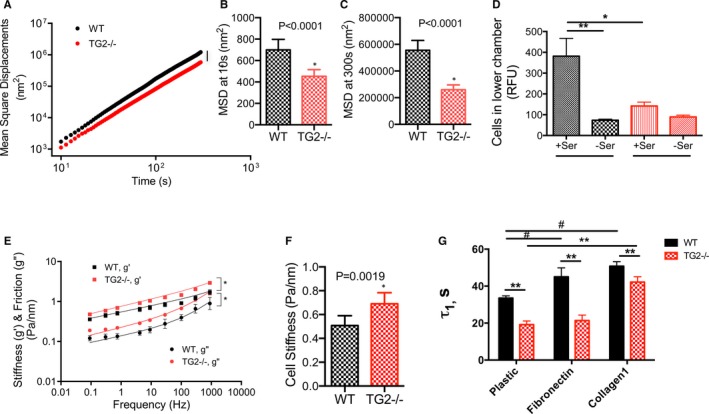Figure 2.

TG2 contributes to smooth muscle cell (SMC) micromechanics. A, TG2−/− SMCs showed strikingly lower cytoskeletal remodeling dynamics when compared with wild‐type (WT) SMCs (n=540 WT cells, 525 TG2−/− cells; 4 independent measurements; *P<0.05). B and C, Mean square displacements were significantly lower in TG2−/− cells at 10 s (B) and 300 s (C). D, TG2−/− SMCs showed diminished motility in response to 10% serum as chemoattractant in a Boyden chamber assay when compared with that of WT SMCs (*P<0.05; by Kruskal–Wallis test; n=9). E, Both storage (g′) and loss (g″) moduli of TG2−/− SMCs were markedly higher than those of WT SMCs over 5 decades of frequency (n=186 WT cells, 227 TG2−/− cells; 4 independent measurements). F, Overall cell stiffness was greater in TG2−/− cells than in WT cells. G, De‐adhesion from uncoated, fibronectin‐coated, and collagen‐coated cell culture dishes was faster in TG2−/− SMCs than in WT SMCs in response to treatment with 0.05% trypsin (**P<0.01 vs WT; # P<0.05 vs plastic WT by 2‐way ANOVA with Bonferroni post‐hoc correction; n=6). RFU indicates relative fluorescence units; TG2, tissue transglutaminase.
